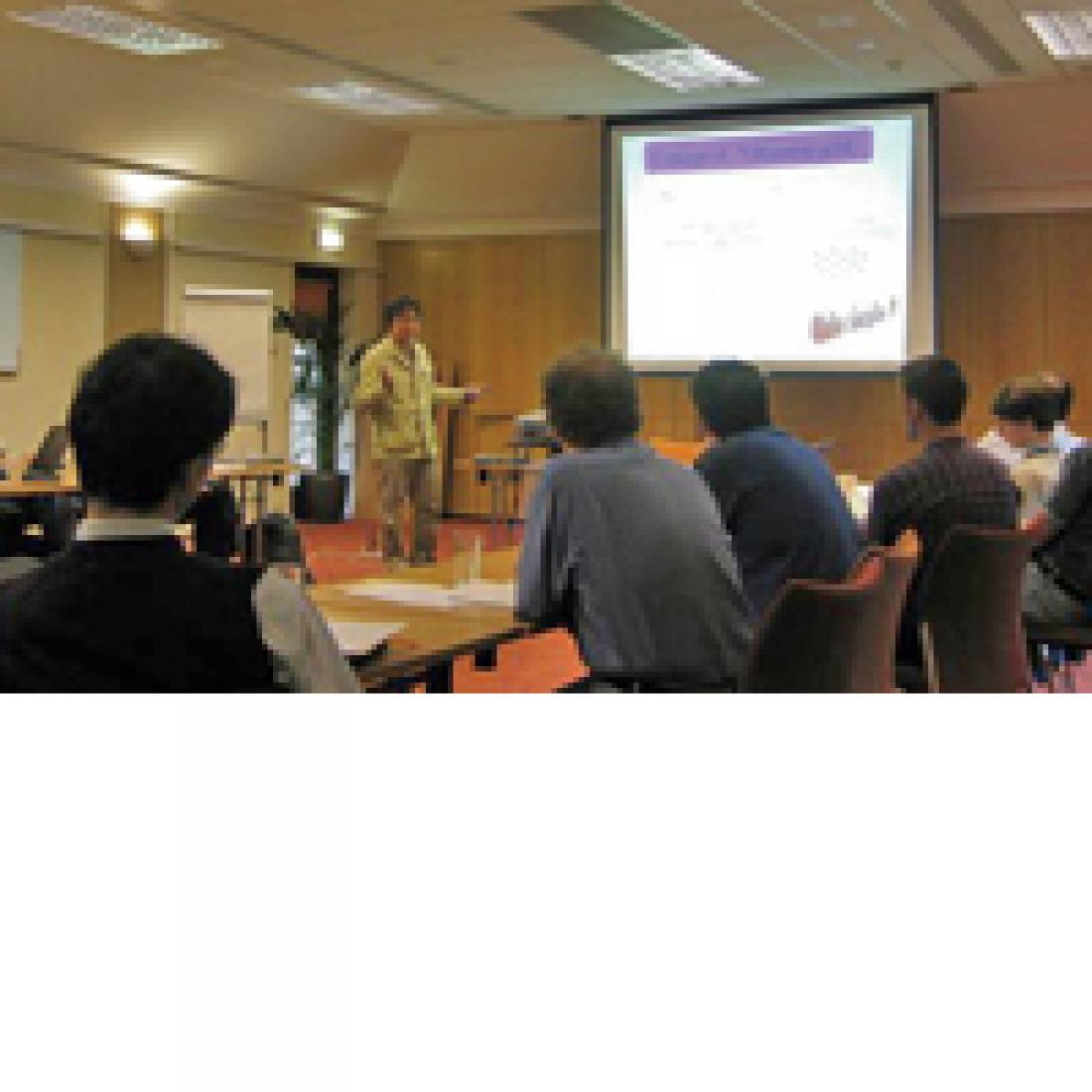Hosted in the beautiful setting of the Cosener’s House at the Rutherford Appleton Laboratory (RAL) in Oxfordshire, UK, located on the grounds of the mediaeval Abbey of Abingdon, the symposium aimed to strengthen collaborative research ties between RIKEN and RAL, and to deepen mutual understanding of muon science and the experimental technology used in its pursuit.
RAL’s ISIS proton synchrotron facility, the site of experiments discussed at the symposium, houses two muon beam lines, one each for the RIKEN–RAL Muon Facility and the ISIS European Muon Facility. Over the past twenty years, the RIKEN–RAL Muon Facility has supported a wide range of research, including muon-catalyzed fusion, the use of muons in investigating the electromagnetic properties of various materials, and the use of ultralow-energy muon beams in surface science.
The Cosener’s House symposium featured a total of nine presentations by representatives from the RIKEN–RAL Muon Facility and the ISIS European Muon Facility. RIKEN presentations focused on the construction of a new muon spin rotation (μSR) spectrometer having 600 plastic scintillation counters embedded with wavelength-shifting fibers, and on experimental high-pressure μSR apparatus. RAL presentations centered on an experimental high magnetic field μSR apparatus with 7T superconducting magnet, and on muon spin radiofrequency resonance equipment.
The assortment of presentations at the symposium provided an invaluable opportunity for participants to exchange views on experimental equipment currently under development, discuss plans for future facilities, and share experiences in overcoming common challenges. As the largest research collaboration project between Japan and the United Kingdom, the success of the RIKEN–RAL Muon Facility depends on these discussions, which play a central role in upholding the facility’s track record of groundbreaking research in muon science.



